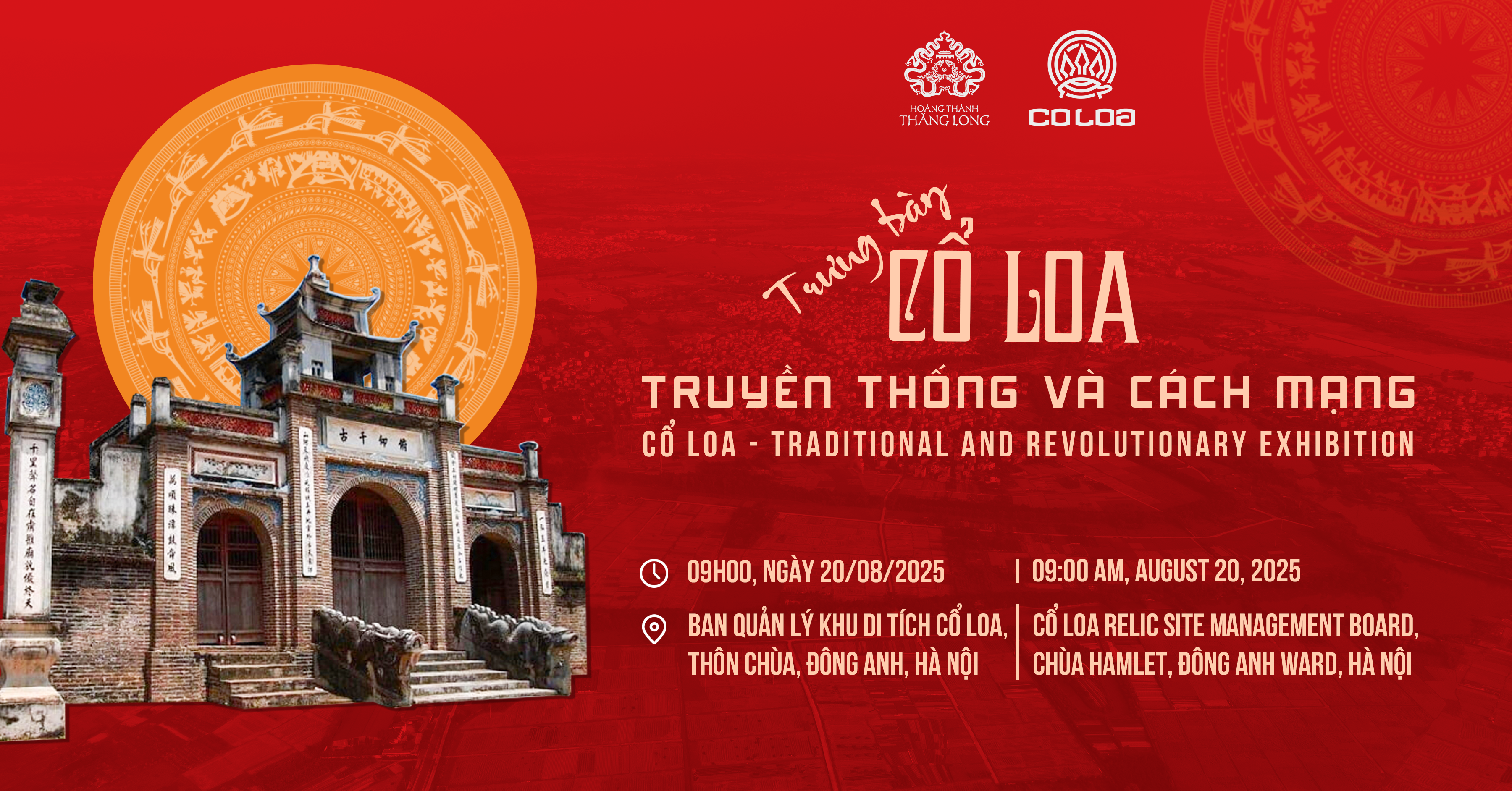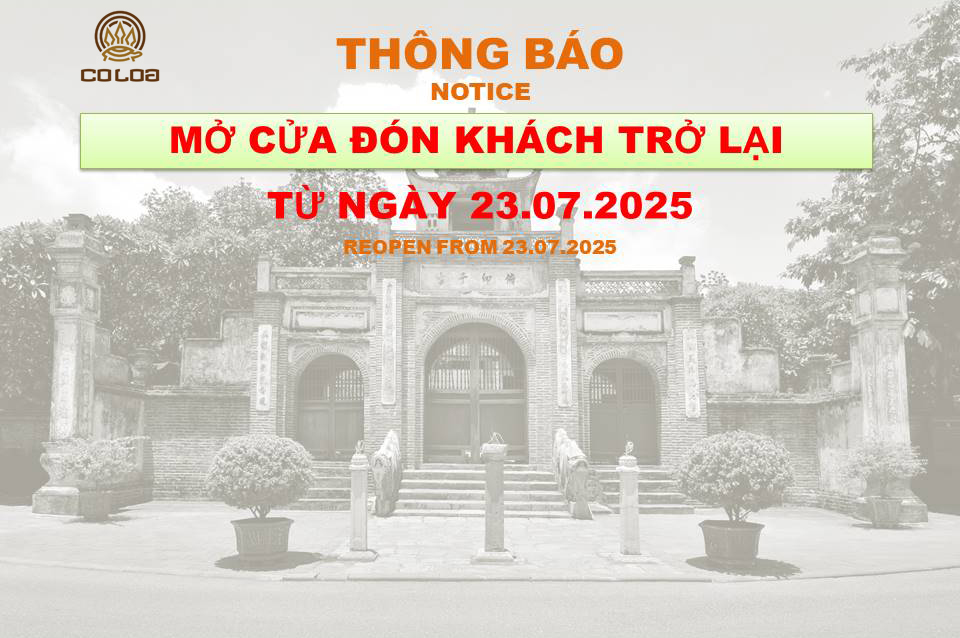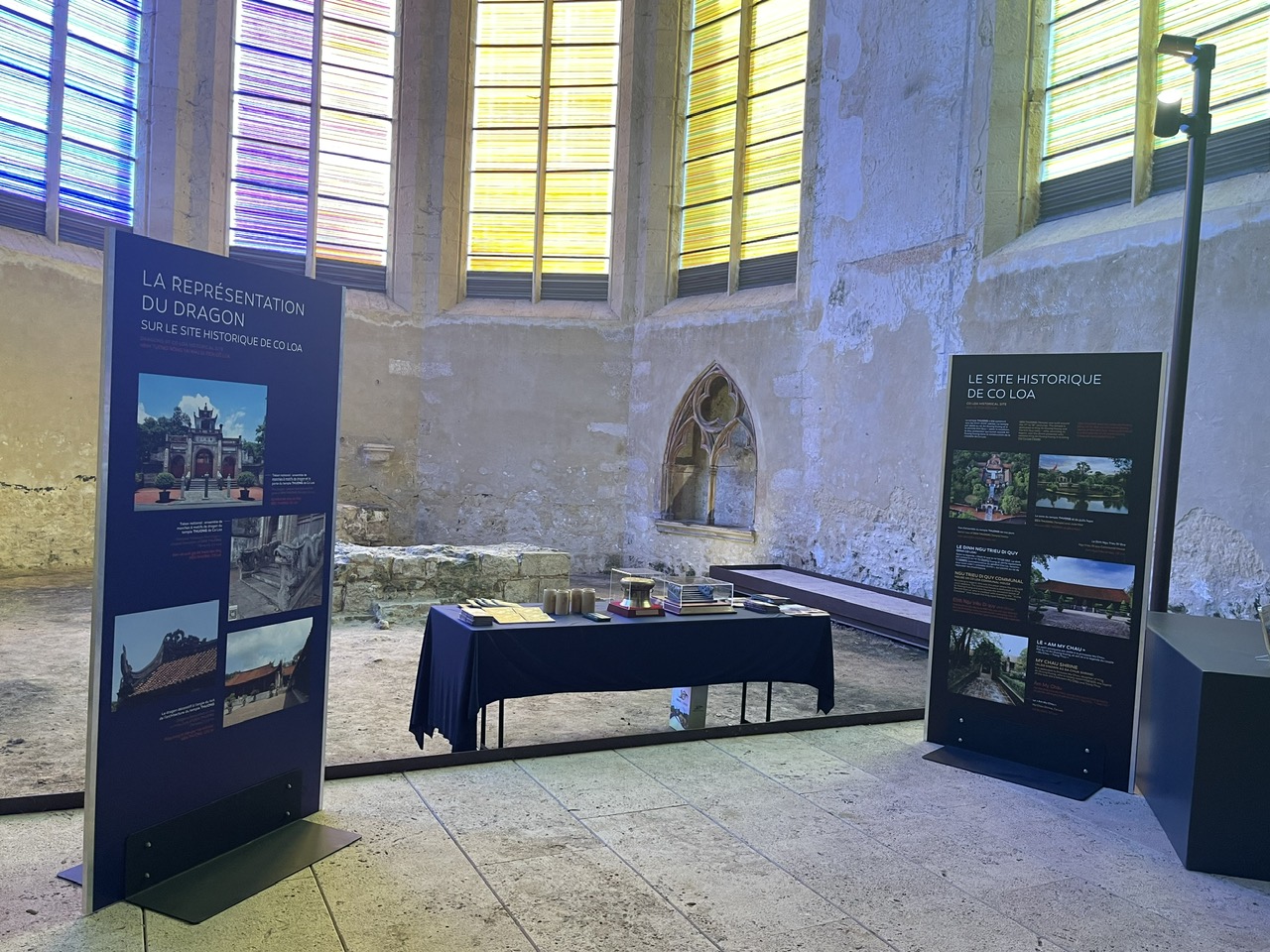
To celebrate the 80th anniversary of the August Revolution (19/8/1945 – 19/8/2025) and the National Day of the Socialist Republic of Vietnam (2/9/1945 – 2/9/2025), the Thang Long – Hanoi Heritage Conservation Center, the Management Board of the Cổ Loa Relic Site, and the People’s Committee of Đông Anh Commune jointly organize the exhibition titled “Cổ Loa – Tradition and Revolution.”
1. Cổ Loa – A Thousand-Year Tradition According to archaeological research, the Cổ Loa area was home to ancient Vietnamese communities with continuous development spanning 4,000 years. Cổ Loa was chosen multiple times as the capital of Việt: under King An Dương Vương in the 3rd century BCE, Hậu Lý Nam Đế in the 6th century, and Ngô Quyền in the 10th century. Its strategic location and rich cultural heritage made Cổ Loa a political, military, and economic center across many centuries. Although no longer a seat of royal power, Cổ Loa remains a timeless symbol of patriotism and resilience. This land preserves the full historical–cultural legacy of an heroic nation, a source of pride for the people of Đông Anh and for Vietnam as a whole. Map of prehistoric and early–historic archaeological sites (Phùng Nguyên – Đồng Đậu – Gò Mun – Đông Sơn) at the Cổ Loa Relic Site
Map of prehistoric and early–historic archaeological sites (Phùng Nguyên – Đồng Đậu – Gò Mun – Đông Sơn) at the Cổ Loa Relic Site
 Southwestern section of the Middle Rampart
Southwestern section of the Middle Rampart
Dragon-head pottery fragment, Lê Dynasty, 17th–18th century
2. Cổ Loa – Glorious in Revolution
At the end of the 19th century, like many Vietnamese villages, Cổ Loa fell under colonial domination and hardship. Upholding their millennia-old tradition, the people of Cổ Loa did not submit. They gradually embraced revolutionary ideals and became an important base for printing and disseminating clandestine documents. On 17 August 1945, Cổ Loa seized power early, contributing to the success of the August Revolution. During the resistance wars against the French and the Americans, with its strategic proximity to the capital, Cổ Loa served as a steadfast rear base, providing manpower and resources for the frontlines and playing a significant role in national salvation and defense.
 Revolutionary relic stele of Cổ Loa
Revolutionary relic stele of Cổ Loa

The first printing office of the “Cờ Giải Phóng” newspaper at comrade Phú’s house, xóm Vang (Cổ Loa), later moved to Sằn Giã after being exposed
 Đền Thượng (Upper Temple) – venue for many crucial meetings of the safe-zone cadres
Đền Thượng (Upper Temple) – venue for many crucial meetings of the safe-zone cadres
 Stele house – Upper Temple: site of the first Party cell and numerous Party meetings
Stele house – Upper Temple: site of the first Party cell and numerous Party meetings
 On 17 August 1945, under Việt Minh leadership, the people of Cổ Loa gathered at Ngự Triều Di Quy Communal House, dissolved the old administration, and established the provisional revolutionary committee - making Cổ Loa one of the earliest communes nationwide to seize power, fueling the uprising in Hanoi and surrounding areas
On 17 August 1945, under Việt Minh leadership, the people of Cổ Loa gathered at Ngự Triều Di Quy Communal House, dissolved the old administration, and established the provisional revolutionary committee - making Cổ Loa one of the earliest communes nationwide to seize power, fueling the uprising in Hanoi and surrounding areas
 At 20:13 on 18 December 1972, at the Cổ Loa missile site (Đông Anh, Hà Nội), Battalion 59, Regiment 261 (Thành Loa), Division 361, Air Defence - Air Force shot down a U.S. B-52G strategic bomber - the first aircraft downed on the opening night of the historic 12-day-and-night campaign, contributing to the victory of “Hanoi – Điện Biên Phủ in the Air.”
At 20:13 on 18 December 1972, at the Cổ Loa missile site (Đông Anh, Hà Nội), Battalion 59, Regiment 261 (Thành Loa), Division 361, Air Defence - Air Force shot down a U.S. B-52G strategic bomber - the first aircraft downed on the opening night of the historic 12-day-and-night campaign, contributing to the victory of “Hanoi – Điện Biên Phủ in the Air.”
On 30 April 1975, as the resistance war against the United States ended in complete victory and national reunification, Cổ Loa entered a new era—healing wartime wounds, rebuilding the homeland, and developing its economy, culture, and preservation of ancient heritage.

Đông Anh General Hospital, built in 1978
3. Cổ Loa – Renewal, Integration, and DevelopmentAfter reunification, Cổ Loa embarked on recovery and development in peacetime. From a traditional agricultural village rich in history, Cổ Loa has gradually undergone comprehensive renewal in economy, culture, and society. Achievements in building new rural areas, conserving cultural heritage, and integrating with the development of the Capital affirm the vitality and new position of this land of “sacred earth and talented people.”
Cổ Loa’s appearance is becoming increasingly modern yet remains harmonious with its traditional values—balancing cultural ecology with industrial and agricultural development, urban and rural spaces, tradition and revolution.
Under the city’s administrative reforms toward a two-tier urban governance model, with districts reorganized and new ward-level administrative units established, Đông Anh is oriented to become one of Hanoi’s dynamic development zones. Grasping national and local development strategies, Cổ Loa is rising to join the aspirational momentum of a strong, prosperous Vietnam in a new era.

Aerial view of the Cổ Loa area

Roads, bridges, and market by the Hoàng River

Master plan for conservation and enhancement of the Cổ Loa Citadel relics
The exhibition opens to visitors from 20 August 2025 at the Exhibition House of the Cổ Loa Relic Site, Chùa Hamlet, Đông Anh Commune, Hanoi. We respectfully invite you to visit.







